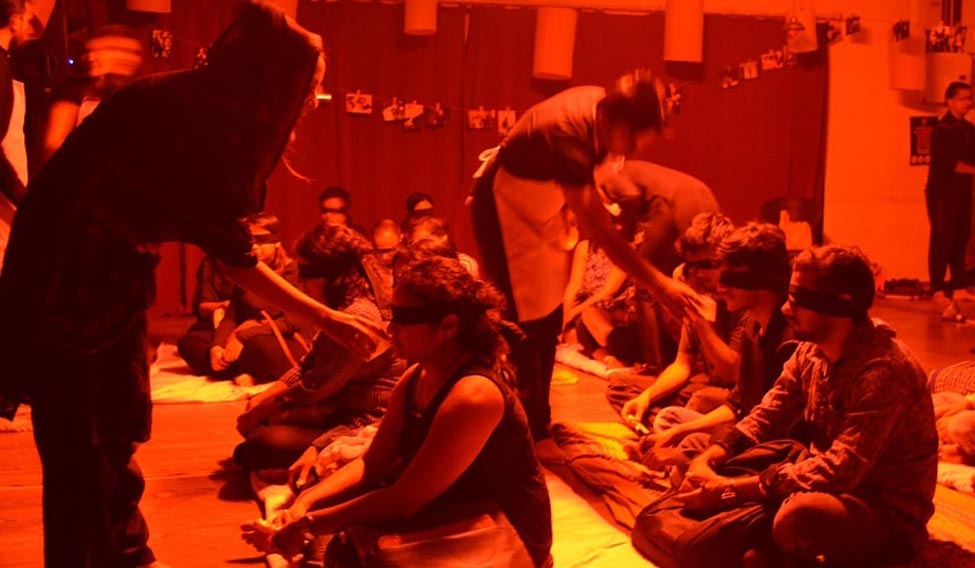As I descended a narrow flight of stairs, I was greeted by a young man at the doorway of the Aleph-The Divine Space. He strikes up a conversation with me; he enquires if I was there for The Darkroom 2.0—an immersive theatre performance by the Rangaai Theatre Company, set to commence in a few minutes. I nod. He asks me to wait in an acutely narrow alley leading to the next floor. By then, another person comes with a plastic bag. He digs in, takes out a black strip of cloth. The first guy gestures to proceed towards him.
I do as I am told. The next thing I know I'm blindfolded, handed a lollipop and asked to move. With a little reading about the play, which is in its third year, this was the only expected part of the experience. He holds me by my forearm, the grip is tight. “Don't be scared,” he said. “It's all a part of the play.” He leads me ahead. I feel another set of hands, on my shoulders this time. “Sit here,” says another voice. I obey. Someone else is sitting next to me. A big handbag assures me its a girl. But before I could settle with that feeling, someone whispers Bengali in my ear. There's darkness in the room, which smells of incense sticks and fresh hawan. A psychedelic song plays (the director Tushar Dalvi later told me that it's his own composition in noise genre).
Before the folds were removed, the setup had already messed up our senses. The strong performances by the actors would just enhance that. Of the three stories performed that evening with added sensory experiences, the first—Durga Pujo—sees a female actor recounting her experience of sexual abuse as a five-year-old; the second and third were enactments of classics—Premchand's Kafan and Saadat Hasan Manto's Khol Do.
The uniting theme that runs through the three acts is that of the subjugation of women in different forms. Durga Pujo, the most heart-breaking of all, (also because it's an original story, not heard as many times as the other two) talks about the mental state of a woman who is unable to overcome the torture she went through as a kid. Performed in a stretch of almost an hour, it stole the show, especially because of the audience reaction it received.
The vivid portrayal of the actor as a young Bengali girl who was abused, molested and repeatedly raped by her own uncle tugs at the heartstrings. The girl, now grown-up, feels caged the experiences of childhood overpowering her. What will the audience do—save her or punish the devilish uncle responsible for a trauma with which she has to live forever?
The audience takes a decision—it's always better to save a life. The audience is equally a part of the following two acts. And that is what makes all the difference and The Darkroom, a play worth experiencing.









